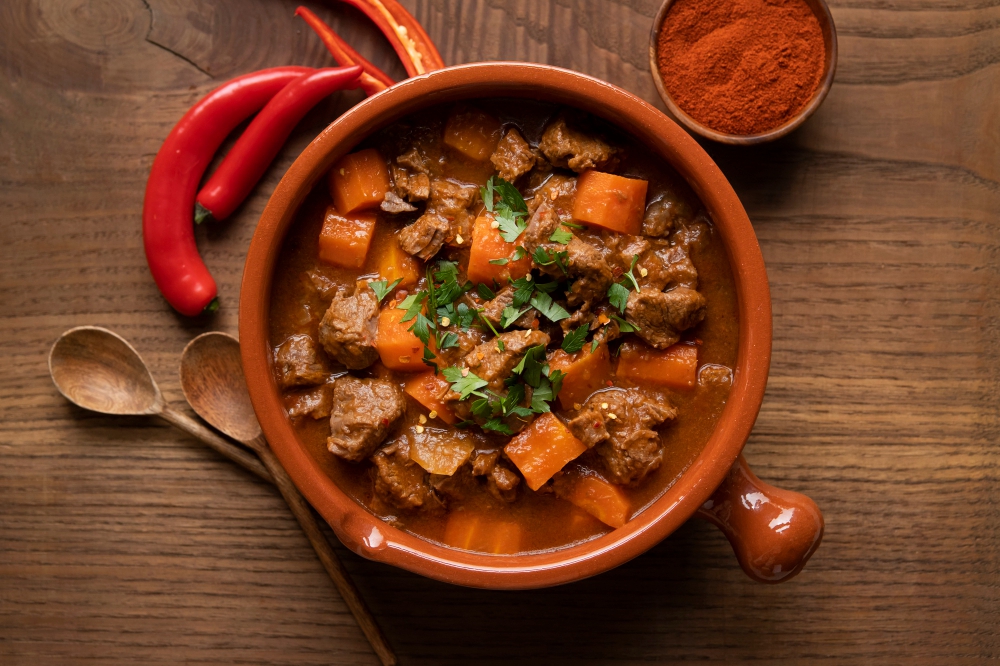Introduction
Have you ever craved a dish that's so rich, so aromatic, and so comforting that it transports you to another world? If so, then slow-cooked mutton curry is the culinary journey you've been waiting for. This dish, a staple in many Indian and Pakistani cuisines, is a symphony of flavours that will tantalize your taste buds and leave you craving more.
In this blog post, we'll delve into the art of slow-cooking mutton curry. We'll explore the key ingredients, techniques, and science behind why this dish is so incredibly delicious. Whether you're a seasoned cook or a kitchen newbie, this guide will equip you with the knowledge and confidence to create your masterpiece.
The Magic of Slow Cooking
The secret to a truly exceptional mutton curry lies in the slow cooking process. By simmering the meat and spices over low heat for an extended period, you allow the flavours to meld and develop. This technique results in a tender, succulent, and incredibly flavorful dish that is simply irresistible.
Slow cooking also has the added benefit of being hands-off. Once you've assembled the ingredients and set the slow cooker to work, you can go about your day. This makes it a perfect choice for busy weeknights or lazy weekends.
Key Ingredients
A traditional mutton curry recipe typically includes the following ingredients:
-
Mutton: The star of the show, mutton is a flavorful and nutritious meat that lends itself well to slow cooking.
-
Spices: A blend of spices, such as turmeric, cumin, coriander, garam masala, and red chilli powder, provides the curry with its signature aroma and flavour.
-
Tomatoes: Tomatoes add a tangy sweetness to the curry and help to balance out the heat from the spices.
-
Onions: Onions provide a foundation for the curry and contribute to its depth of flavour.
-
Yogurt: Yogurt adds a creamy texture and a touch of tanginess to the curry.
-
Ghee or oil: Ghee or oil is used to sauté the onions and spices, helping to release their flavours.
-
Water or stock: Water or stock is added to create the curry's gravy.
-
Cooking cream: A splash of cooking cream can be added towards the end of the cooking process to add a touch of richness and creaminess to the curry.
The Cooking Process
-
Marinate the mutton: Marinating the mutton in a mixture of yoghurt, spices, and lemon juice helps to tenderize the meat and infuse it with flavour.
-
Sauté the spices: Heat ghee or oil in a pot and sauté the spices until fragrant.
-
Add the onions: Add the onions and cook until they are softened and browned.
-
Add the mutton: Stir in the marinated mutton and cook until it is browned on all sides.
-
Simmer: Pour in the water or stock and bring the mixture to a boil. Reduce the heat and simmer for several hours, or until the mutton is tender and the curry has thickened.
-
Add cooking cream: Towards the end of the cooking process, stir in a splash of cooking cream to add richness and creaminess.
-
Adjust the seasoning: Taste the curry and adjust the seasoning as needed.
Tips for a Perfect Mutton Curry
-
Choose the right cut of mutton: A boneless shoulder or leg is a good choice for this dish.
-
Don't be afraid to experiment with spices: Feel free to add or subtract spices to suit your taste preferences.
-
Use a good quality yoghurt: A thick, creamy yoghurt will produce the best results.
-
Let the curry rest before serving: Allow the curry to rest for a few minutes before serving to allow the flavours to meld.
Conclusion
Slow-cooked mutton curry is a truly delicious and satisfying dish that is perfect for any occasion. With a little patience and practice, you can create a masterpiece that will impress your friends and family. So why not give it a try and discover the magic of slow cooking for yourself?
To enhance the flavour and nutritional value of your mutton curry, consider incorporating fresh fruits and vegetables into the dish. For example, you could add chopped tomatoes, bell peppers, or spinach to the curry during the final stages of cooking. These ingredients will not only add a burst of colour and texture but also provide essential vitamins, minerals, and antioxidants.




